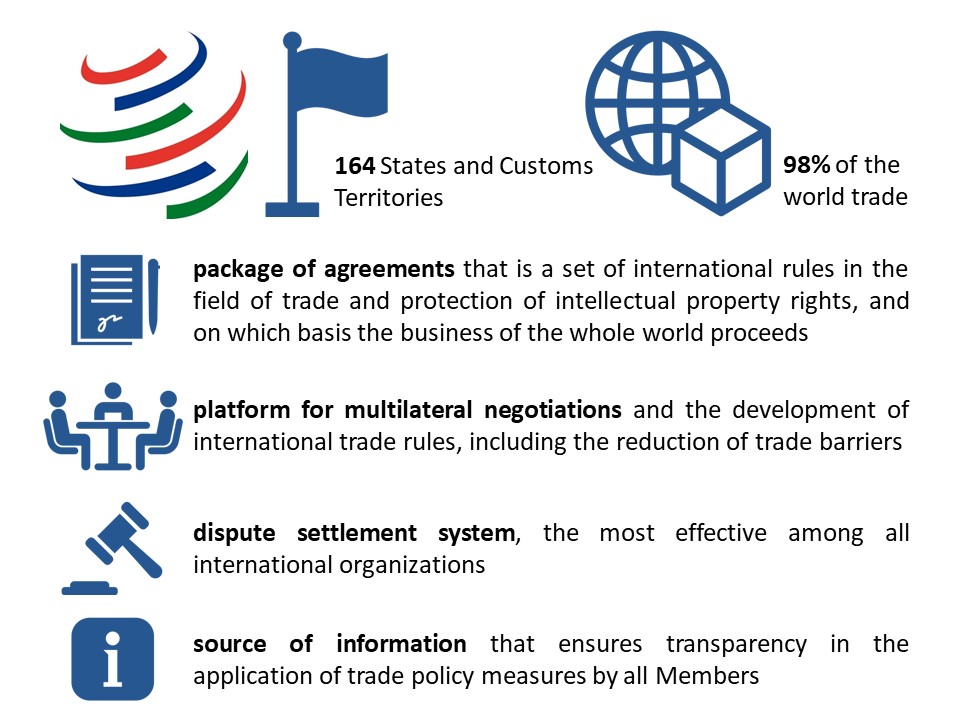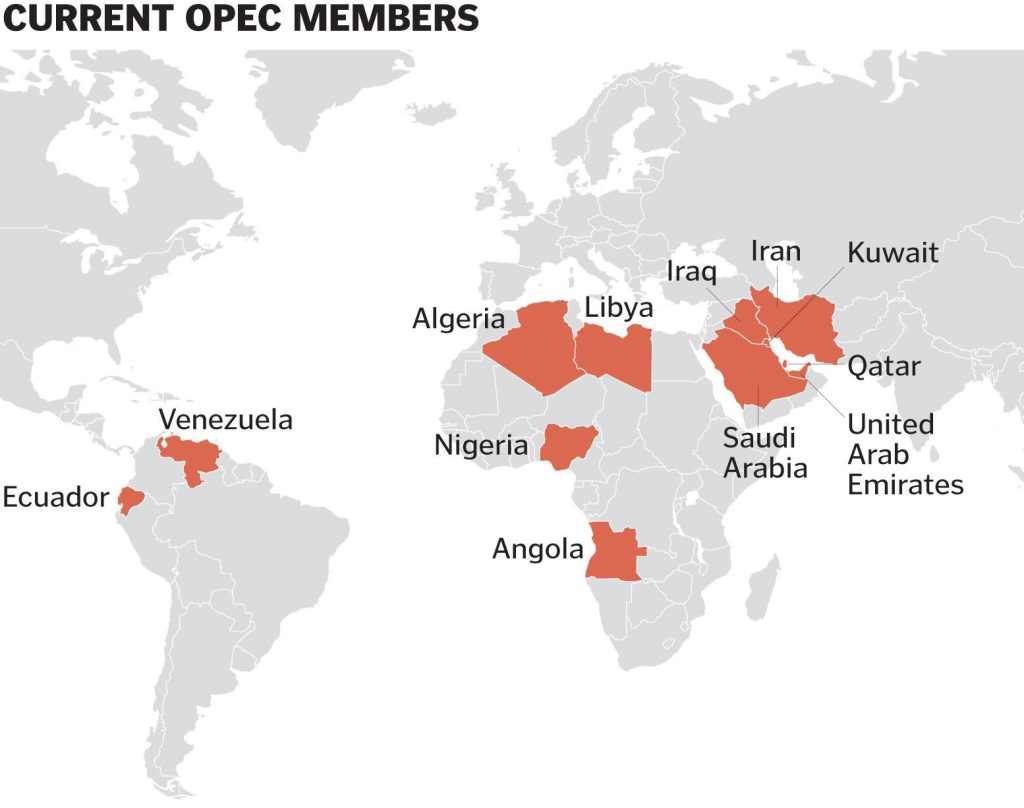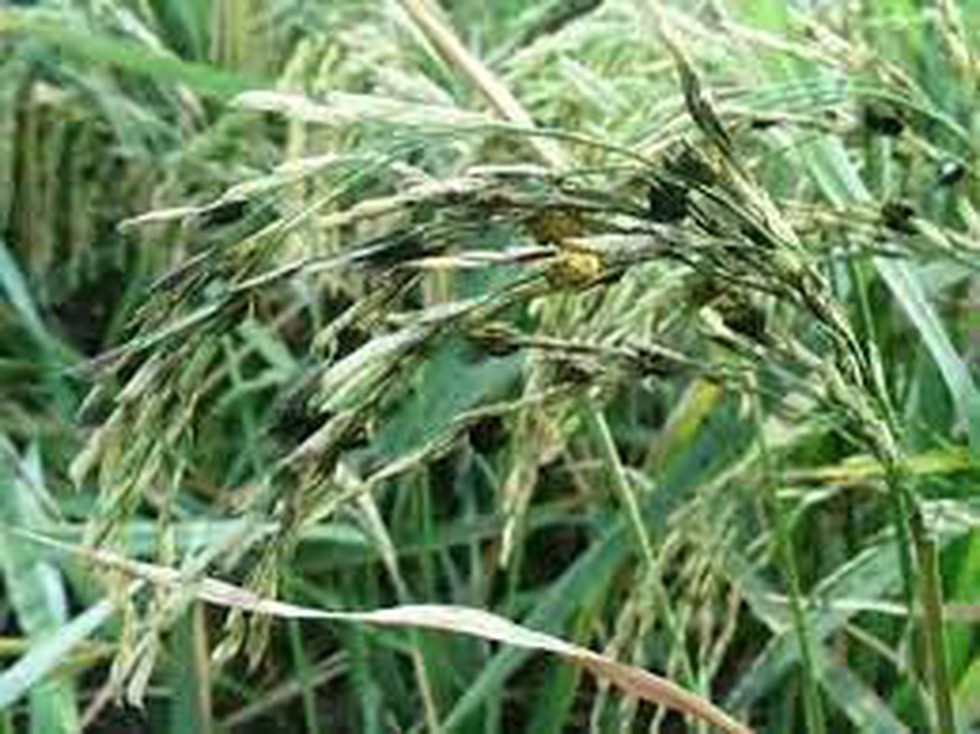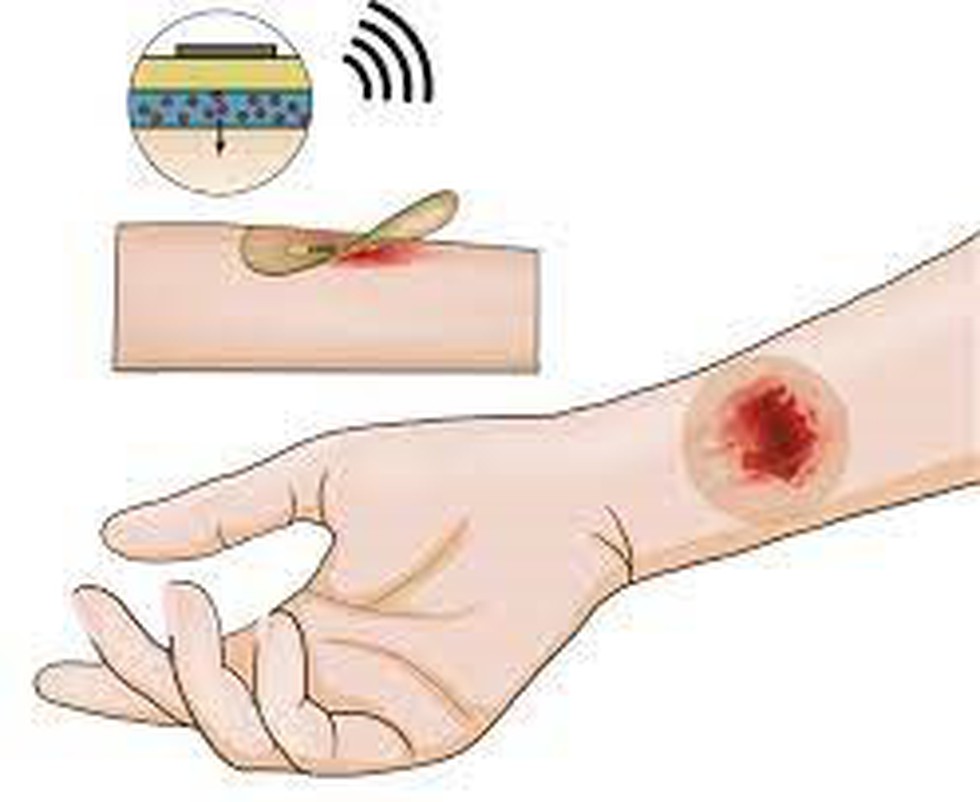CONTENTS
- World Environment Day 2023
- Anaemia
- Duty-free quota-free (DFQF) scheme
- Electronic interlocking system in railways
- National Centre for Disease Control (NCDC)
- Organization of the Petroleum Exporting Countries
- Foot rot disease
- Smart Bandage
World Environment Day 2023
Context:
World Environment Day, observed annually on June 5th, serves as a platform to raise awareness about environmental protection and sustainability.
Relevance:
GS III: Environment and Ecology
Dimensions of the Article:
- Details
- World Environment Day 2023
- E-Cooking: A Clean and Energy-Efficient Alternative
- Bureau of Energy Efficiency
Details:
- To commemorate the 50th anniversary, the Bureau of Energy Efficiency (BEE) and the Collaborative Labeling and Appliance Standards Program (CLASP), an international non-governmental organization, joined forces to host a conference titled “Consumer-Centric Approaches for E-cooking Transition” in New Delhi.
- The primary objective of the conference was to expedite the adoption of energy-efficient, environmentally friendly, and cost-effective e-cooking solutions throughout India.
World Environment Day 2023
Establishment and Hosting:
- World Environment Day was established by the United Nations Assembly on June 5, 1972.
- It is hosted by a different country each year.
- India hosted the 45th celebration in 2018 with the theme ‘Beat Plastic Pollution.’
- Côte d’Ivoire, in partnership with the Netherlands, is hosting the 2023 World Environment Day.
50th Anniversary:
- This year marks the 50th anniversary of World Environment Day.
Theme for 2023:
- The theme is focused on solutions to plastic pollution.
- The campaign is #BeatPlasticPollution.
Objectives:
- Raise awareness about plastic pollution.
- Mobilize communities to take action.
- Encourage collaborative efforts to address plastic pollution.
- Promote a healthier and more sustainable environment.
E-Cooking: A Clean and Energy-Efficient Alternative
Definition and Adoption:
- E-cooking involves using electric cooking appliances as a clean and energy-efficient alternative.
- It includes electric stoves, induction cooktops, and other electric cooking devices.
- It is gaining popularity as a sustainable cooking method in households.
Role of Electricity Access in India:
- India’s achievement of 24/7 electricity access has been a driving factor in the transition to e-cooking.
- The Saubhagya Scheme has provided electricity connections, eliminating power cuts and facilitating the adoption of electric cooking.
Mission LiFE and Clean Cooking Energy:
- E-cooking is a crucial part of India’s Mission LiFE initiative.
- Mission LiFE promotes sustainable lifestyles and aims to create pro-planet advocates.
- Clean cooking energy is essential for India’s energy transition, aligning with Mission LiFE’s goals.
Scalability and Affordability:
- With reliable electricity access, e-cooking is poised to become the future of Indian kitchens.
- Electric cooking technology is scalable and affordable, suitable for both urban and rural areas.
Promoting Adoption and Affordability:
- Developing affordable business models is key to widespread adoption of e-cooking solutions.
- Utilizing renewable energy sources, such as solar and thermal power, can reduce costs and enhance accessibility.
- Aggregation models and price reduction strategies can make e-cooking more affordable for a larger population.
Overcoming Technology Barriers:
- Concerns regarding appliance faults and compatibility have been addressed in e-cooking technology.
- Replicating successful e-cooking models at scale and gradually replacing traditional cookers can build consumer confidence and facilitate a smooth transition.
Benefits for Power Sector and Consumers:
- E-cooking aligns with Sustainable Development Goal 7.1, ensuring universal access to clean cooking and improving indoor air quality.
- Energy consumption in reheating can be reduced, contributing to a cleaner, greener lifestyle.
Bureau of Energy Efficiency:
- The BEE was established on 1st March 2002 under the provisions of the Energy Conservation Act, 2001.
- Objective: To reduce the energy intensity of the Indian economy.
- It coordinates with designated consumers, designated agencies, and other organizations.
- It recognizes, identifies, and utilizes existing resources and infrastructure to perform the functions assigned to it under the Energy Conservation Act.
-Source: The Hindu, PIB
About Anaemia
Context:
India is reconsidering its anaemia policy and shifting the estimation of anaemia prevalence from the National Family Health Survey (NFHS) to the Diet and Biomarkers Survey (DABS-I).
Relevance:
GS II: Health
Dimensions of the Article:
- About Anaemia
- How to tackle anaemia?
- Government initiatives related to addressing anaemia in India
About Anaemia:
- Anaemia is a condition characterized by a deficiency in the number of red blood cells or their oxygen-carrying capacity.
- The most common cause of anaemia is iron deficiency, but it can also be caused by deficiencies in folate, vitamin B12, and vitamin A, chronic inflammation, parasitic infections, and inherited disorders.
Symptoms:
- Severe anaemia can lead to symptoms such as fatigue, weakness, dizziness, and drowsiness. Pregnant women and children are particularly vulnerable to the effects of anaemia.
Anaemia Burden in India:
- According to the NFHS-5 (2019-21) survey, there has been a significant increase in the prevalence of anaemia in India.
- It reported that 57% of women (aged 15-49) and 67% of children (aged 6-59 months) in India are anaemic.
Challenges in Diagnosis:
- Over-diagnosis of anaemia in India has been cautioned against, as the World Health Organization (WHO) cut-offs for haemoglobin may not be suitable for the population.
- The cut-off points for haemoglobin depend on various factors such as age, gender, physiological status, and altitude.
- Differences in blood sampling methods used in surveys like NFHS and recommended venous blood sampling can also lead to inaccuracies in values.
Diet and Biomarkers Survey (DABS-I):
- DABS-I is a comprehensive national-level dietary survey conducted to determine food and nutrient adequacy across different age groups and regions in India.
- It collects individual dietary intake data and provides nutrient composition information on cooked and uncooked foods.
- DABS-I is expected to improve estimates of anaemia prevalence and support the development of targeted interventions.
Importance of Anaemia Data:
- Anaemia data is a crucial indicator of public health, especially for vulnerable populations like pregnant women and children under five.
- Prevalence studies on anaemia help monitor progress in reproductive health, understand the impact on work capacity, and contribute to national development efforts.
- These key points highlight the prevalence, causes, challenges, and efforts to address anaemia in India.
How to tackle anaemia?
Tackling anaemia involves a comprehensive approach that addresses the underlying causes and promotes preventive measures. Here are some strategies to tackle anaemia:
Nutritional Intervention:
- Promote a balanced and diverse diet rich in iron, folate, vitamin B12, and other essential nutrients.
- Encourage consumption of iron-rich foods such as leafy green vegetables, legumes, nuts, seeds, meat, poultry, and fortified cereals.
- Advocate for nutrition education and awareness programs to improve dietary practices.
Iron Supplementation:
- Provide iron supplements, particularly to high-risk groups such as pregnant women, children, and adolescents.
- Promote adherence to iron supplementation guidelines and ensure availability and accessibility of iron supplements.
Food Fortification:
- Implement fortification programs to enhance the iron and other micronutrient content of commonly consumed foods such as flour, rice, salt, and cooking oils.
- Monitor and enforce food fortification standards to ensure the quality and effectiveness of fortified products.
Deworming Programs:
- Conduct regular deworming programs to control parasitic infections, which can contribute to anaemia.
- Provide anthelmintic medication, such as Albendazole, to at-risk populations, especially children and pregnant women.
Health Education and Awareness:
- Raise awareness about anaemia, its causes, symptoms, and preventive measures through community-based programs, schools, healthcare facilities, and media campaigns.
- Educate individuals and communities about the importance of proper nutrition, hygiene, and seeking timely healthcare.
Antenatal Care and Maternal Health:
- Ensure universal screening of pregnant women for anaemia and provide iron and folic acid supplements during pregnancy.
- Enhance antenatal care services to include regular monitoring of haemoglobin levels and early detection and management of anaemia.
Healthcare System Strengthening:
- Improve access to quality healthcare services, including regular health check-ups, diagnostic facilities, and treatment for anaemia.
- Train healthcare professionals to effectively diagnose and manage anaemia and provide appropriate counseling and support to patients.
Monitoring and Evaluation:
- Establish robust systems for monitoring anaemia prevalence, nutritional status, and program effectiveness.
- Regularly assess the impact of interventions and adjust strategies based on the findings.
Government initiatives related to addressing anaemia in India:
Anaemia Mukt Bharat (AMB):
- Launched in 2018 as part of the Intensified National Iron Plus Initiative (NIPI) Program, AMB aims to accelerate the decline of anaemia prevalence by one to three percentage points annually.
- The target groups for AMB include children aged 6-59 months, 5-9 years, adolescent girls and boys aged 10-19 years, women of reproductive age (15-49 years), pregnant women, and lactating mothers.
Weekly Iron and Folic Acid Supplementation (WIFS):
- Implemented to tackle high anaemia prevalence among adolescent girls and boys, WIFS involves supervised weekly ingestion of Iron Folic Acid (IFA) tablets.
Operationalization of Blood Bank:
- Blood banks have been set up in district hospitals and blood storage units in sub-district facilities such as sub-divisional hospitals and community health centers.
- This initiative aims to address complications arising from severe anaemia.
Pradhan Mantri Surakshit Matritva Abhiyan (PMSMA):
PMSMA focuses on conducting special antenatal care (ANC) check-ups on the 9th of every month, led by medical officers and obstetricians, to detect and treat cases of anaemia among pregnant women.
Deworming Program:
- Biannual deworming with Albendazole is provided to control worm infestation, which can contribute to anaemia.
Health Management Information System and Mother Child Tracking System:
- These systems are implemented for reporting and tracking cases of anaemia, particularly among pregnant women.
Universal Screening and Provision of Iron and Folic Acid:
- Pregnant women are universally screened for anaemia as part of antenatal care, and iron and folic acid tablets are provided to them during their visits to sub-centers, primary health centers, and other health facilities.
- Outreach activities are also conducted through Village Health & Nutrition Days (VHNDs).
-Source: The Hindu
Duty-Free Quota-Free (DFQF) scheme
Context:
According to a report by the least developed countries Group at the World Trade Organisation (WTO), the Duty-free quota-free (DFQF) scheme remains unutilized by the LDC nations.
Relevance:
GS II: International Relations
Dimensions of the Article:
- About the Duty-free quota-free (DFQF) scheme
- World Trade Organization (WTO)
About the Duty-free quota-free (DFQF) scheme:
- The Duty-free quota-free (DFQF) scheme was initially established during the WTO Hong Kong Ministerial Meeting in 2005.
- In 2008, India became the first developing country to implement this initiative, granting LDCs access to 85% of its total tariff lines.
- Subsequently, in 2014, the scheme was expanded to provide preferential market access on approximately 98.2% of India’s tariff lines to LDCs.
World Trade Organization (WTO)
- The World Trade Organization (WTO) is an intergovernmental organization that is concerned with the regulation of international trade between nations.
- It is the largest international economic organization in the world.
- The headquarters of the World Trade Organization is in Geneva, Switzerland.
- The WTO deals with regulation of trade in goods, services and intellectual property between participating countries by providing a framework for negotiating trade agreements and a dispute resolution process aimed at enforcing participants’ adherence to WTO agreements, which are signed by representatives of member governments.
- The WTO prohibits discrimination between trading partners, but provides exceptions for environmental protection, national security, and other important goals.
- Trade-related disputes are resolved by independent judges at the WTO through a dispute resolution process.
- The WTO has 164 members (including European Union) and 23 observer governments (like Iran, Iraq, Bhutan, Libya etc.)
- India is a founder member of the 1947 GATT and its successor, the WTO.

Functions of WTO
- Trade negotiations: The WTO agreements cover goods, services and intellectual property. They spell out the principles of liberalization, and the permitted exceptions. They set procedures for settling disputes.
- Implementation and monitoring: WTO agreements require governments to make their trade policies transparent by notifying the WTO about laws in force and measures adopted. Various WTO councils and committees seek to ensure that these requirements are being followed and that WTO agreements are being properly implemented.
- Dispute settlement: The WTO’s procedure for resolving trade quarrels under the Dispute Settlement Understanding is vital for enforcing the rules and therefore for ensuring that trade flows smoothly.
- Building trade capacity: WTO agreements contain special provision for developing countries, including longer time periods to implement agreements and commitments, measures to increase their trading opportunities, and support to help them build their trade capacity, to handle disputes and to implement technical standards.
- Outreach: The WTO maintains regular dialogue with non-governmental organizations, parliamentarians, other international organizations, the media and the general public on various aspects of the WTO and the ongoing Doha negotiations, with the aim of enhancing cooperation and increasing awareness of WTO activities.
-Source: The Hindu
Electronic Interlocking System in Railways
Context:
An electronic track management system used by the railways has become the focus of investigations after the recent train crash in Odisha’s Balasore district.
Relevance:
GS III: Science and Technology
Dimensions of the Article:
- Interlocking System
- Electronic Interlocking (EI)
- Functioning of the Electronic Interlocking (EI) System
Interlocking System:
- The interlocking system is a safety mechanism used in railway signalling systems to ensure the safe movement of trains on railway tracks.
- It involves a controlled arrangement of signals and points, which are interconnected mechanically or electrically, or both.
- The purpose of the interlocking system is to enable trains to move safely through a controlled area without conflicting with other trains.
- The system ensures that train movements are coordinated and controlled, preventing collisions or other unsafe situations.
- It allows trains to switch tracks or junctions securely, following a predefined sequence of movements that are regulated by the interlocking mechanism.
- By using interlocking, the system ensures that conflicting train movements cannot occur simultaneously, enhancing the overall safety of railway operations.
Electronic Interlocking (EI):
- Electronic Interlocking (EI) is an advanced signalling system used in railways that employs electronic components and software to manage train movements and track configurations.
- The system ensures that two trains cannot occupy the same track simultaneously and allows a train to proceed only when the route ahead is clear.
- EI is a modern alternative to the conventional Relay Interlocking system used in railway signalling.
- Trained personnel from the signalling and telecommunications department, known as “signallers” or signal operators, operate and monitor the EI system.
- The EI system consists of three crucial elements: signals, track circuits, and point switches.
- Signals are used to communicate instructions to trains, indicating whether to stop (red), proceed (green), or exercise caution (yellow) based on the track conditions ahead.
- Track circuits are electrical circuits installed on tracks to detect the presence of trains or vehicles. They help determine whether a particular section of track is clear or occupied, ensuring safe train movements.
- Point switches are movable sections of the track that allow trains to change tracks. They are operated using switches and guide the wheels towards the desired direction. Point machines play a vital role in locking the point switches to ensure safe train operations.
- The EI system enhances safety and efficiency in railway operations by preventing collisions and regulating train movements based on track conditions.
Functioning of the Electronic Interlocking (EI) System:
- The EI system determines when a train can proceed based on two factors: the track direction and the availability of the alternate track.
- It first checks whether the train needs to continue on the current track or switch to a different one.
- The system then guides the train to an available track at a junction, ensuring that another train cannot enter the same section of track simultaneously through special circuits.
- All activities within the signalling system are recorded in a microprocessor-based data logger, similar to the black box of an aircraft. This data logger can store and process signal data to generate reports.
Track Occupancy Sensing:
- Various track-occupancy sensing devices, such as axle counters, are installed on the tracks to sense whether a track is occupied.
- These sensors detect the passage of wheels on the rails and count the number of sets of wheels or axles that have passed over them.
- By monitoring the number of axles passing through, the system determines whether the entire train has passed through a particular section of track.
Safety of the System:
- The EI system is designed to be fail-safe, meaning that if any of the three components (signals, points, and track occupancy sensors) does not correspond to the overall “safe” logic fed into the computer, the system will work to stop the oncoming train.
- In case of a failure, all signals will turn red, and train operations will come to a halt, ensuring safety.
Status of Implementation:
- As of 2022, approximately 2,888 stations in India were equipped with an electronic interlocking system, covering about 45.5% of the Indian Railways network.
- The implementation of EI systems aims to enhance safety and efficiency in train operations throughout the railway network.
-Source: Indian Express
National Centre for Disease Control (NCDC)
Context:
The National Centre for Disease Control (NCDC) recently alerted states about smaller outbreaks for five diseases—typhoid, malaria, dengue, scrub typhus and hepatitis A.
Relevance:
GS II: Health
Dimensions of the Article:
- About National Centre for Disease Control (NCDC)
- Historical Background
- Functions
About National Centre for Disease Control (NCDC):
- The NCDC is an institute operating under the Indian Directorate General of Health Services, Ministry of Health and Family Welfare.
- The administrative and technical head of the institute is the Director, who is an officer of the Public Health sub-cadre of Central Health Service.
Historical Background:
The NCDC, formerly known as the National Institute of Communicable Diseases (NICD), originated as the Central Malaria Bureau established in Kasauli, Himachal Pradesh in 1909.
- After expansion, it was renamed as the Malaria Survey of India in 1927.
- The organization was relocated to Delhi in 1938 and became known as the Malaria Institute of India (MII).
- In response to the significant reduction in malaria cases achieved under the National Malaria Eradication Programme (NMEP), the Government of India decided to reorganize and expand the institute’s activities to address other communicable diseases.
- Consequently, in 1963, the MII was renamed as the National Institute of Communicable Diseases (NICD) to assume these additional responsibilities.
- In 2009, NICD underwent a transformation and emerged as the National Centre for Disease Control (NCDC), with an expanded mandate of controlling emerging and re-emerging diseases.
- It is headquartered in New Delhi.
Functions:
- The NCDC serves as the nodal agency in the country for disease surveillance, facilitating the prevention and control of communicable diseases.
- It works in coordination with state governments and possesses the capacity and capability for disease surveillance, outbreak investigation, and rapid response to contain and combat outbreaks.
- The NCDC also addresses the issue of Anti-Microbial Resistance (AMR), which is an emerging area of concern with far-reaching consequences.
- It provides referral diagnostic support, capacity building, and technical assistance to states and union territories (UTs) in the country.
-Source: The Hindu
Organization of the Petroleum Exporting Countries
Context:
Saudi Arabia will soon pledge new voluntary production cuts as part of a broader OPEC+ deal to curb output.
Relevance:
GS II- International Relations
Dimensions of the Article:
- About Organization of the Petroleum Exporting Countries (OPEC)
- What is OPEC+?
About Organization of the Petroleum Exporting Countries (OPEC)

- The Organization of the Petroleum Exporting Countries is an intergovernmental organization of 14 nations, founded in 1960 in Baghdad by the first five members (Iran, Iraq, Kuwait, Saudi Arabia, and Venezuela), and headquartered since 1965 in Vienna, Austria.
- As of 2018, the 14 member countries accounted for an estimated 44 percent of global oil production and almost 82% of the world’s “proven” oil reserves, giving OPEC a major influence on global oil prices that were previously determined by the so-called “Seven Sisters” grouping of multinational oil companies.
- The stated mission of the organization is to “coordinate and unify the petroleum policies of its member countries and ensure the stabilization of oil markets, in order to secure an efficient, economic and regular supply of petroleum to consumers, a steady income to producers, and a fair return on capital for those investing in the petroleum industry.”
What is OPEC+?
- OPEC + countries are non-OPEC countries that export crude oil alongside the 14 OPEC countries.
- Azerbaijan, Bahrain, Brunei, Kazakhstan, Malaysia, Mexico, Oman, Russia, South Sudan, and Sudan are among the OPEC plus countries.
What are their goals?
- The OPEC and non OPEC producers first formed the alliance at a historic meeting in Algiers in 2016.
- The aim was to undertake production restrictions to help resuscitate a flailing market.
-Source: Indian Express
Foot Rot Disease
Context:
Recently, several farmers raised the concern over “foot rot” disease in the saplings of the Basmati variety of paddy in the nurseries.

Relevance:
GS II: Health
Dimensions of the Article:
- About Foot rot disease
- About Basmati Rice
About Foot Rot Disease:
- Foot rot disease, also known as Bakanae Disease, is a fungal infection that affects the Basmati variety of paddy.
- It is caused by the fungus Fusarium verticillioides.
- The disease is both soil and seed-borne, meaning it can be transmitted through contaminated soil or infected seeds.
- Infected saplings exhibit symptoms such as pale yellow coloration, elongation, and eventual drying, leading to plant death.
- In some cases, symptoms may appear after transplantation, with infected plants growing taller than normal before wilting and dying.
About Basmati Rice:
- Basmati rice is highly regarded for its quality and is a prominent agricultural product of India.
- It is primarily cultivated in seven states: Jammu and Kashmir, Himachal Pradesh, Punjab, Haryana, Delhi, Uttar Pradesh, and Uttarakhand.
- Basmati rice holds a Geographical Indication (GI) tag, highlighting its unique origin and characteristics.
- When cooked, Basmati rice exhibits desirable traits such as a pleasant mouthfeel, aromatic fragrance, and long grain length.
- It has a significant market abroad and contributes around ₹30,000 crores in foreign exchange annually.
-Source: The Hindu
Smart Bandage
Context:
Researchers have developed a smart bandage which can help treat chronic wounds.

Relevance:
GS III: Science and Technology
Dimensions of the Article:
- About Smart Bandage
- How does it work?
About Smart Bandage:
- A smart bandage is a type of bandage made from a soft and stretchable polymer that adheres to the skin.
- It incorporates a bioelectronics system with biosensors to monitor biomarkers present in wound exudate.
- The bandage collects data from the wound and transmits it wirelessly to a smartphone or tablet for review by a healthcare professional.
- It includes a hydrogel layer with drug-release capabilities and the ability to stimulate tissue regrowth using a pair of electrodes.
How does it work?
- Biosensors within the smart bandage analyze the chemical composition of the wound exudate, which changes as the wound heals, providing information about the wound status.
- Additional sensors monitor parameters like pH and temperature in real-time to detect signs of infection and inflammation.
- The bandage’s pair of electrodes not only stimulate tissue regrowth but also control the release of drugs from the hydrogel layer.
- The wireless functionality of the smart bandage eliminates the need for bulky equipment and wired connections, addressing limitations of existing electrical stimulation devices and increasing its clinical usability.
-Source: The Hindu





